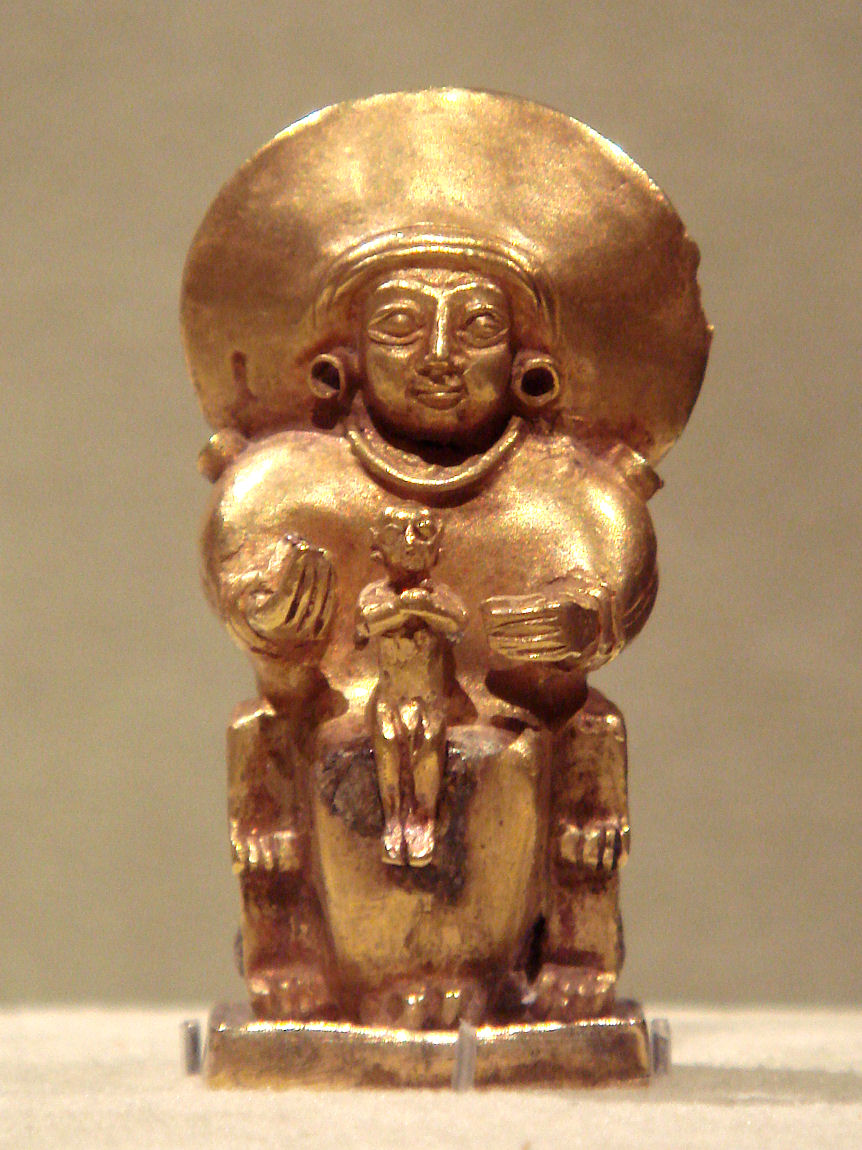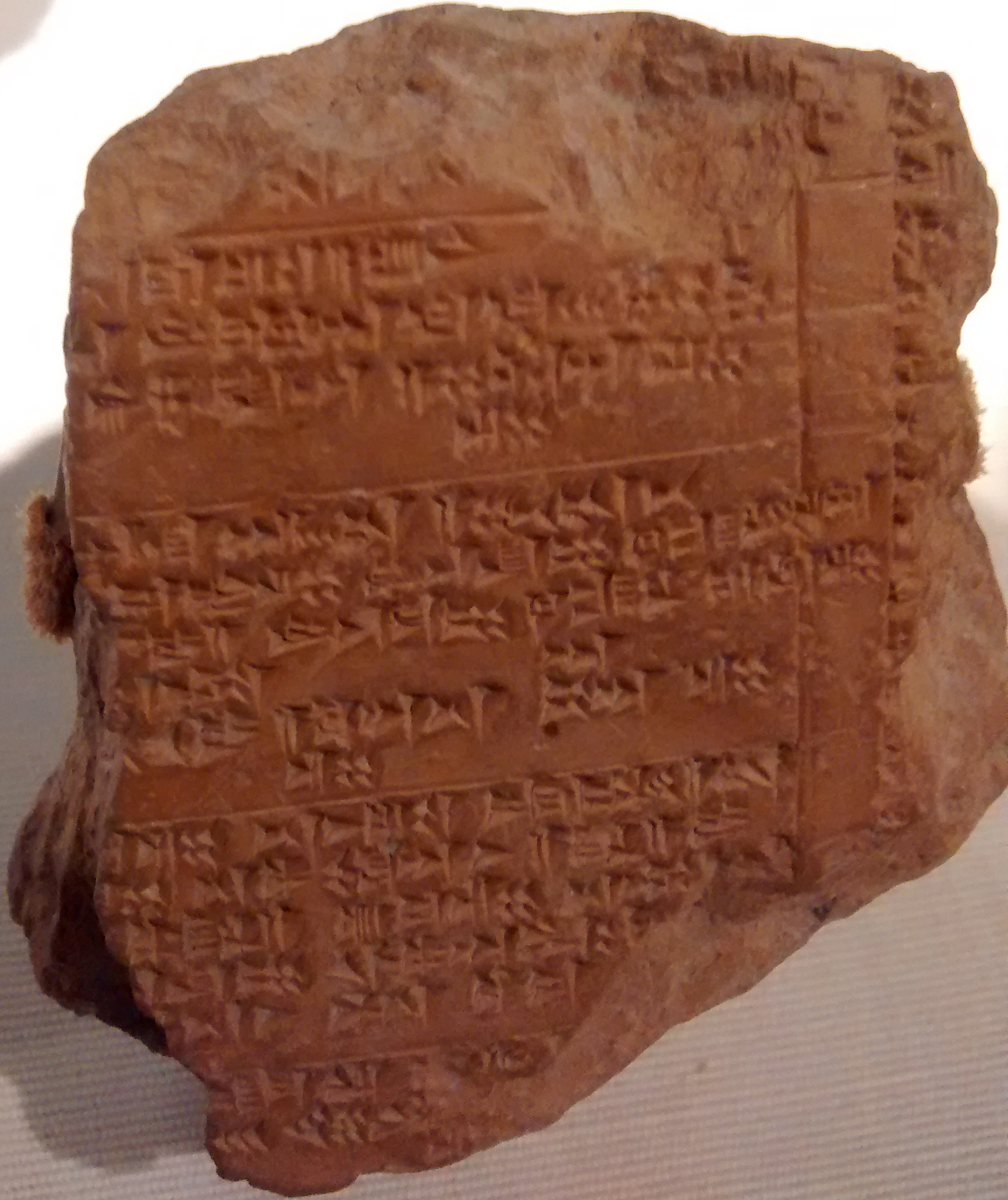|
Sun Goddess Of Arinna
The Sun goddess of Arinna, also sometimes identified as Arinniti or as Wuru(n)šemu, is the chief Goddess of Hittite mythology. Her companion is the weather god Tarḫunna. She protected the Hittite kingdom and was called the "Queen of all lands." Her cult centre was the sacred city of Arinna. In addition to the Sun goddess of Arinna, the Hittites also worshipped the Sun goddess of the Earth and the Sun god of Heaven, while the Luwians originally worshipped the old Proto-Indo-European Sun god Tiwaz. It appears that in the northern cultural sphere of the early Hittites, there was no male solar deity. Distinguishing the various solar deities in the texts is difficult since most are simply written with the Sumerogram dUTU (Solar deity). As a result, the interpretation of the solar deities remains a subject of debate. Family and myths The Sun goddess of Arinna and the weather god Tarḫunna formed a pair and together they occupied the highest position in the Hittite state's pa ... [...More Info...] [...Related Items...] OR: [Wikipedia] [Google] [Baidu] |
Hattian Language
Hattic, or Hattian, was a non-Indo-European agglutinative language spoken by the Hattians in Asia Minor in the 2nd millennium BC. Scholars call the language "Hattic" to distinguish it from Hittite, the Indo-European language of the Hittite Empire. The Hittites referred to the language as ''hattili'' (there are no attestations of the name of the language in Hattic itself), related to the Assyrian and Egyptian designation of an area west of the Euphrates as "Land of the Hatti" (Khatti). The heartland of the oldest attested language of Anatolia before the arrival of Hittite-speakers, ranged from Hattusa, then called "Hattus", northward to Nerik. Other cities mentioned in Hattic include Tuhumiyara and Tissaruliya. Hittite-speakers conquered Hattus from Kussara to its south in the 18th century BC. They absorbed or replaced the Hattic-speaking ruling class (Hattians) but retained the name ''Hatti'' for the region. The name of the inhabitants of that area is likewise identified with ... [...More Info...] [...Related Items...] OR: [Wikipedia] [Google] [Baidu] |
Kurunta
Kurunta () or Kurunti(ya) is the Hittite mythology, Hittite stag god and a tutelary god of the countryside. Name The name of Kurunta is spelled as (DEUS)CERVUS in Hieroglyphic Luwian, or as dKAL in Hittite cuneiform. As dKAL has to be read as dLAMMA following Assyriological tradition, many times it is directly transliterated as dLAMMA instead. Kurunta was attested as Runti(ya) in the first millennium BC, although there is a possibility that the loss of the initial syllable may have occurred during the time of the Hittites, Hittite New Kingdom/Empire period. Character and iconography Kurunta is a tutelary deity, as seen from the usage of the sign dKAL which corresponds to dLAMMA. However, there are still differences between the Hittite dKAL deities and the Mesopotamian dLAMMA deities, such as that KAL and LAMMA have different meanings, and Archi adds that unlike the Mesopotamian dLAMMA the Hittite dKAL deities were always considered male. His sacred animal is the stag. A ... [...More Info...] [...Related Items...] OR: [Wikipedia] [Google] [Baidu] |
Ḫattuša
Hattusa, also Hattuşa, Ḫattuša, Hattusas, or Hattusha, was the capital of the Hittites, Hittite Empire in the late Bronze Age during two distinct periods. Its ruins lie near modern Boğazkale, Turkey (originally Boğazköy) within the great loop of the Kızılırmak River (Hittite: ''Marashantiya''; Greek: ''Halys River, Halys''). Charles Texier brought attention to the ruins after his visit in 1834. Over the following century, sporadic exploration occurred, involving different archaeologists. The Deutsche Orient-Gesellschaft, German Oriental Society and the German Archaeological Institute began systematic excavations in the early 20th century, which continue to this day. Hattusa was added to the List of World Heritage Sites in Turkey, UNESCO World Heritage Site list in 1986. History The earliest traces of settlement on the site are from the sixth millennium BC during the Chalcolithic period. Toward the end of the 3rd Millennium BC the Hattian people established a settle ... [...More Info...] [...Related Items...] OR: [Wikipedia] [Google] [Baidu] |
Arnuwanda I
Arnuwanda I was a Hittite great king during the early 14th century BC, ruling in c. 1390–1380/1370 BC. Origins Arnuwanda's parents are unknown. Because both Arnuwanda and his wife, Queen Ašmu-Nikkal, are described on their respective seals as the children of Tudḫaliya II (sometimes called Tudḫaliya I or I/II), this was long interpreted as a marriage between siblings. This, however, was clearly forbidden by Hittite custom and law, and it is now generally agreed that while Ašmu-Nikkal was indeed the daughter of Tudḫaliya II, Arnuwanda was only his son-in-law and possibly adoptive son, as the daughter's ''antiyant'' husband, an acceptable heir in the absence of a son. Association on the throne with Tudḫaliya II Arnuwanda I began his reign in association with his father-in-law and predecessor, Tudḫaliya II, perhaps for as many as a dozen years or so. The simultaneous attestation of both men as great king indicates an association on the throne, something unusual in Hit ... [...More Info...] [...Related Items...] OR: [Wikipedia] [Google] [Baidu] |
Volkert Haas
Volkert Haas (1 November 1936 – 13 May 2019) was a German Assyrologist and Hittitologist. __NOTOC__ Life Volkert Haas studied Assyrology and Near Eastern archaeology at the Free University of Berlin and the University of Marburg from 1963 to 1968. In December 1968 he received a doctorate in Assyriology from the Free University. After that, he was an assistant at the "Institute for the History of Medicine" at the Free University from 1969 to 1970. There he worked on Babylonian and Assyrian medical texts under the supervision of Franz Köcher. From 1970 to 1973, he carried out the research project "The Hurritological Archive" within the Ancient Near Eastern department of the Free University and he continued to be employed there as an assistant from 1973 to 1977. In 1979, Haas received his habilitation in Ancient Near Eastern philology. After holding an assistant professorship at the Free University from 1977 to 1981, Haas received a position as Professor of Near Eastern Studies a ... [...More Info...] [...Related Items...] OR: [Wikipedia] [Google] [Baidu] |
Ḫattušili I
Hattusili I (''Ḫattušili'' I) was a Hittite king, king of the Hittite Old Kingdom. He reigned ca. 1650–1620 BC (middle chronology), or ca. 1640–1610 BC (low middle chronology). Family Ḫattušili was possibly a nephew of his predecessor Labarna I, Labarna's wife, Tawananna (the title was apparently used as a given name). Tawananna was a daughter of PU-Sarruma (Hišmi-Sarruma), and one brother is known, Papahdilmah, who fought with Labarna for the throne and lost. Papahdilmah could possibly be the father of Ḫattušili, but another brother of Tawananna could have been as well, due to lack of evidence. Ḫattušili's wife was named Kadduši and his grandson was Mursili I, Muršili I, who succeeded him, having been chosen as heir instead of Ḫattušili's nephew. Reign Excavations in Sam'al, Zincirli Höyük, Southern Turkey, suggest that a complex there was destroyed in the mid to late 17th century BC, possibly by Hattusili I in a military campaign, which could confir ... [...More Info...] [...Related Items...] OR: [Wikipedia] [Google] [Baidu] |
Hittite Texts
The corpus of texts written in the Hittite language consists of more than 30,000 tablets or fragments that have been excavated from the royal archives of the capital of the Hittite Kingdom, Hattusa, close to the modern Turkish town of Boğazkale or Boğazköy. While Hattusa has yielded the majority of tablets, other sites where they have been found include: Maşat Höyük, Ortaköy, Kuşaklı or Kayalıpınar in Turkey, Alalakh, Ugarit and Emar in Syria, Amarna in Egypt. The tablets are mostly conserved in the Turkish museums of Ankara, Istanbul, Boğazkale and Çorum (Ortaköy) as well as in international museums such as the Pergamonmuseum in Berlin, the British Museum in London and the Musée du Louvre The Louvre ( ), or the Louvre Museum ( ), is a national art museum in Paris, France, and one of the most famous museums in the world. It is located on the Rive Droite, Right Bank of the Seine in the city's 1st arrondissement of Paris, 1st arron ... in Paris. The corp ... [...More Info...] [...Related Items...] OR: [Wikipedia] [Google] [Baidu] |
Puduḫepa
Puduḫepa or Pudu-Kheba (floruit, fl. 13th century BC) was a Hittites, Hittite tawananna, queen, married to the King Hattusili III. She has been referred to as "one of the most influential women known from the Ancient Near East." Biography Early life and marriage Puduḫepa was born at the beginning of the 13th century BC in the city of Lawazantiya in Kizzuwatna (i.e. Cilicia, a region south of the Hittite kingdom). Her father Bentepsharri was the head priest of the tutelary god, divinity of the city, Shaushka (identified with the Mesopotamian Ishtar), and Puduḫepa grew up to exercise the function of priestess of this same goddess. On his return from the Battle of Kadesh, the Hittite General officer, general Hattusili met Puduḫepa and, it was said, Ishtar instructed him to find in her love and companionship, decreeing that they would enjoy the 'love of being a spouse to each other.' She accompanied him then to the kingdom of Hapissa. For Puduḫepa it was an advantageous ma ... [...More Info...] [...Related Items...] OR: [Wikipedia] [Google] [Baidu] |
Ḫepat
Ḫepat (, ; also romanized as Ḫebat; Ugaritic 𐎃𐎁𐎚, ''ḫbt'') was a goddess associated with Aleppo, originally worshiped in the north of modern Syria in the third millennium BCE. Her name is often presumed to be either a feminine nisba referring to her connection to this city, or alternatively a derivative of the root ''ḫbb'', "to love". Her best attested role is that of the spouse of various weather gods. She was already associated with Adad in Ebla and Aleppo in the third millennium BCE, and in later times they are attested as a couple in cities such as Alalakh and Emar. In Hurrian religion she instead came to be linked with Teshub, which in the first millennium BCE led to the development of a tradition in which she was the spouse of his Luwian counterpart Tarḫunz. Associations between her and numerous other deities are described in Hurrian ritual texts, where she heads her own ', a type of offering lists dedicated to the circle of a specific deity. She commonly ... [...More Info...] [...Related Items...] OR: [Wikipedia] [Google] [Baidu] |
Hurrian Religion
The Hurrian religion was the polytheistic religion of the Hurrians, a Bronze Age people of the Near East who chiefly inhabited the north of the Fertile Crescent. While the oldest evidence goes back to the third millennium Common Era, BCE, it is best attested in cuneiform sources from the second millennium BCE written not only in the Hurrian language, but also Akkadian language, Akkadian, Hittite language, Hittite and Ugaritic. It was shaped by contacts between the Hurrians and the various cultures with which they coexisted. As a result, the Hurrian pantheon included both natively Hurrian deities and those of foreign origin, adopted from List of Mesopotamian deities, Mesopotamian, Syrian (chiefly Eblaite and Ugaritic religion, Ugaritic), Anatolian and Elamite beliefs. The culture of the Hurrians was not entirely homogeneous, and different local religious traditions are documented in sources from Hurrian kingdoms such as Arrapha, Kizzuwatna and Mitanni, as well as from cities with s ... [...More Info...] [...Related Items...] OR: [Wikipedia] [Google] [Baidu] |



